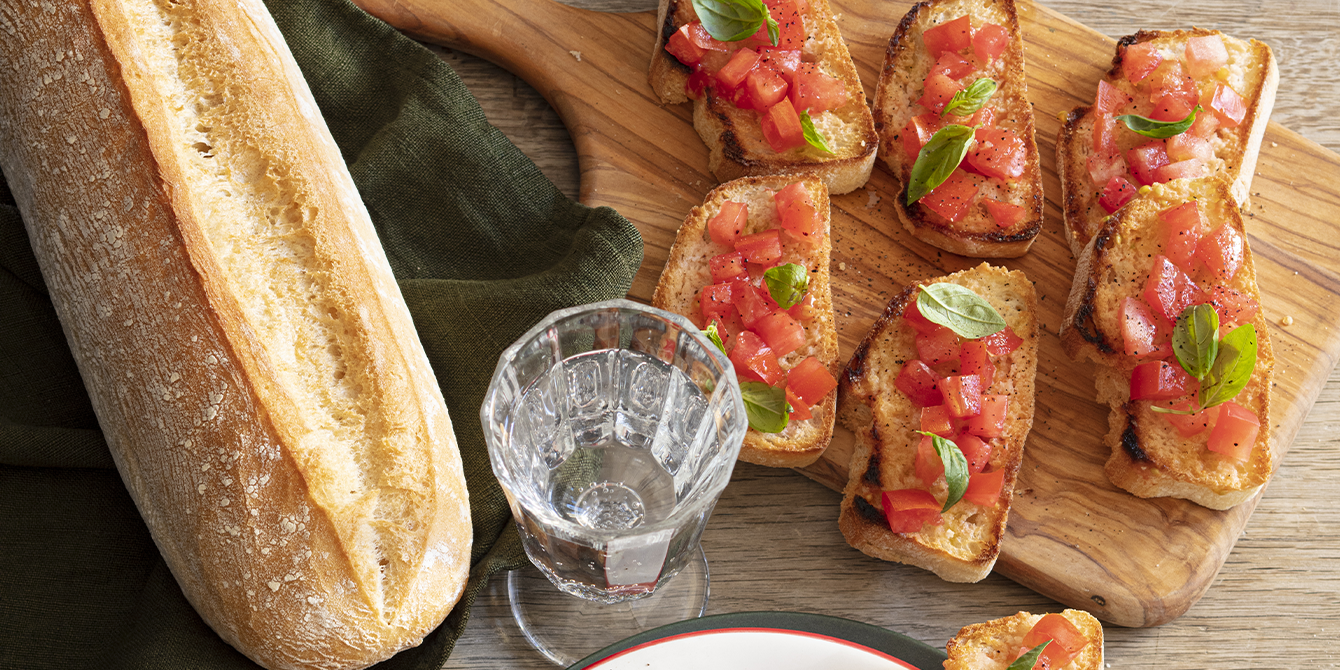
For many years and up till now, the Italian cuisine has won the headlines among other types of cuisines. Indeed, during the last quarter of 2023 for example, social media witnessed an Italian fever where consumers shared their enthusiasm when going to Italian restaurants and while preparing meals with Italian bakery products such as the focaccia pizza, the focaccia sandwich, the ciabatta sandwich... The flexibility of Italian bakery products made it possible for them to design so many recipes, offering a real convenience. Furthermore, interactions (likes, shares, comments) with posts about Italian bread have increased by 56% in the Q4 2023 compared to that of 2022. It seems that consumers just love Italian food!
They also mentioned a lot the Italian origin of ingredients showing the importance of authenticity and their attachment to traditional Italian food. (Délifrance x Ipsos synthesio social listening)
In this article, we'll delve into the Italian culinary landscape for 2024, shedding light on both contemporary innovations and timeless traditions that continue to shape Italian cuisine. From artisanal bread to reimagined classic dishes and the rise of plant-based options, we'll explore how the food industry is adapting to evolving consumer needs while preserving the authenticity and passion that define Italian cooking.
Italian Cuisine Trends 2024: Innovations and Traditions
Italian food started a long time ago, when ancient Rome existed. Italy did not become a large country until 1861, so before that, each region had its own special way of cooking, something it still does today. This is because, after the fall of the Roman Empire, different parts of Italy developed their own culinary traditions based on what foods grew in their region and what they liked to eat.
The influence of italian cuisine is growing worldwide. Let's deep into the trends to keep in mind for 2024. These 3 trends presents an opportunity for you if you are a restaurant, hotel, coffee shop or even a bakery.
Bread in all its shapes
The beauty of Italian bread lies in its diversity, each type having its own unique shape, texture, and flavor. From the flat Piadinas, dimpled surface of Focaccia to the long, thin Grissini or Bastoncino and and grilled Panini, Italian bread exists in all shapes and sizes.
Let's look at some trending Italian breads in 2024:
- Focaccia: This Italian bread, with its versatility, continues to grow in popularity. Restaurants and cafes are reimagining ways to use focaccia, further increasing its appeal.
- Fermented bread: Research indicates a rise in popularity of fermented bakery products, with BIGA being a favorite. Complex flavors and health benefits bring authentic taste
- Rustic bread: There is also a growing demand for more varieties of rustic bread with authentic visual appeal, offering consumers a taste of different Italian regions.
- Wholemeal bread: With health and wellness trends on the rise, wholemeal bread varieties such as those made with oats, bran, and seeds are gaining traction.
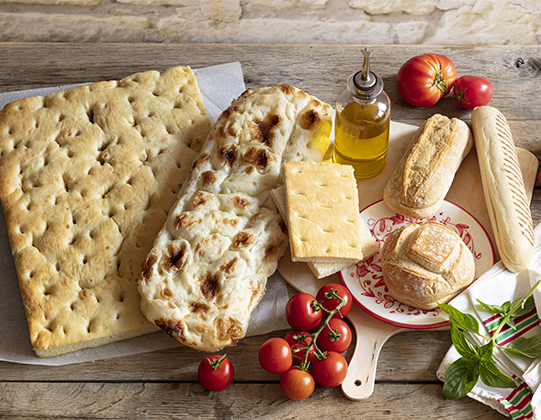

These trends not only provide a snapshot of evolving consumer preferences but also offer exciting opportunities for bakers, restaurants, and food companies.
Classics twisted
In the culinary world of 2024, traditional Italian recipes and products are undergoing a transformation to keep up with trends, adopting new flavors, textures and presentations.
Think of the classic focaccia, now transformed into a generous sandwich with vegetables and cheeses, offering a contemporary twist to a product traditionally eaten as bread. Similarly, the familiar ham-and-butter sandwich takes on an Italian identity, with a ciabatta of thinly sliced prosciutto di Parma. These reinterpretations give classics a touch of innovation.




Versatility as creativity
The Italian trend towards ingredient versatility is a true celebration of culinary creativity.
Indeed, a single ingredient can serve as the basis for a multitude of recipes, offering an infinite variety of food possibilities.
Let's take the example of classic focaccia: this fluffy bread is not limited to being eaten as it is. On the contrary, it can easily be transformed into a delicious pizza, topped with tasty ingredients, or a hearty sandwich, garnished with melting cheeses and fine charcuterie. What's more, its slightly crunchy texture makes it the ideal ingredient for a convivial starter to share with friends or family. This ability to transform one ingredient into a multitude of delicious creations is one of the pillars of Italian cuisine, demonstrating its ingenuity and capacity to adapt to individual tastes and moods.
Think of it as a way to increase your margins and limit your waste.


Versatility as creativity
The Italian trend towards ingredient versatility is a true celebration of culinary creativity.
Indeed, a single ingredient can serve as the basis for a multitude of recipes, offering an infinite variety of food possibilities.
Let's take the example of classic focaccia: this fluffy bread is not limited to being eaten as it is. On the contrary, it can easily be transformed into a delicious pizza, topped with tasty ingredients, or a hearty sandwich, garnished with melting cheeses and fine charcuterie. What's more, its slightly crunchy texture makes it the ideal ingredient for a convivial starter to share with friends or family. This ability to transform one ingredient into a multitude of delicious creations is one of the pillars of Italian cuisine, demonstrating its ingenuity and capacity to adapt to individual tastes and moods.
Think of it as a way to increase your margins and limit your waste.
Plant-Based Revolution
With an increasing emphasis on sustainability and health-conscious eating, plant-based Italian dishes are taking center stage. From creative interpretations of classic dishes using plant-based ingredients to entirely new creations inspired by Italy's culinary heritage, chefs are embracing the versatility of vegetables, legumes, and grains to craft delicious and nutritious meals that cater to a diverse range of dietary preferences.


Italian recipes ideas: bring Italian vibes into your food
It's no secret that Italian food is one of the best in the world, famous for its delicious flavors, ingredients and ability to bring people together around the table. Known not only for its richness and variety, but also for its simplicity and elegance.
Each recipe has been developed with the needs of the industry in mind: quick preparation, minimum complexity and ingredients that promise to deliver flavor. From bars to restaurants or from hotels to coffee shops or bakeries, these Italian food ideas are designed to impress your customers or if you are looking to update your menu with new inspirations or introduce a touch of Italy's culinary excellence to your customers.
Join us as we explore the essence of Italian cuisine through recipes that balance convenience and flavor.
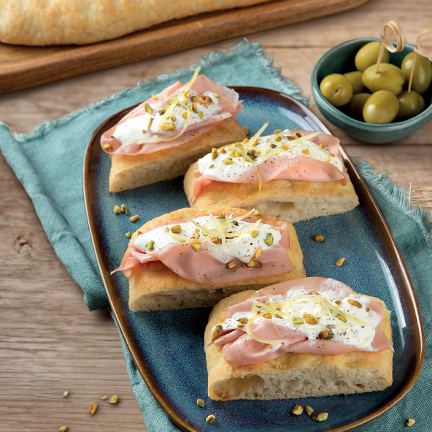

Mortadella & burrata pocket
This exquisite dish, with our Gran Focaccia Sale e Olio, combines textures and flavors of Italian cuisine. Silky mortadella, creamy stracciatella and the subtle crunch of pistachios come together in this delicious recipe. Designed to be versatile, it can be served as an starter or appetizer to share in bars and restaurants as it can be divise in thin slices to share, or as a main course.


Focaccia romana open sandwich
Boost your seasonal menu with the Focaccia Romana Open Sandwich. This recipe is a quick but visually stunning option for any coffee shop or restaurant looking to refresh its offerings for spring. Ideal for a light lunch or a sophisticated starter, its combination of creamy ricotta, cherry tomatoes and marinated zucchini personifies the freshness of the season. This recipe can be adapted in several versions that change according to the seasons.
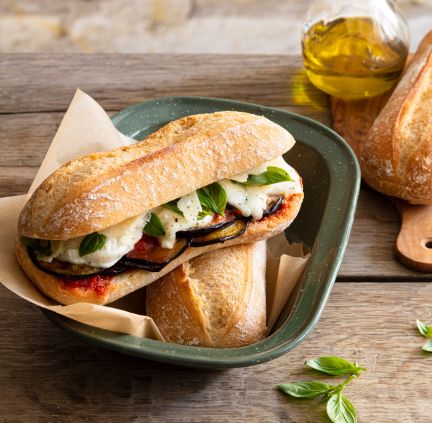

Ciabatta parmiggiana style
This recipe feature a rich combination of eggplant and mozzarella, wrapped between slices of our Ciabattina with a rich tomato sauce. Ideal for sandwich stores and coffee shops looking for a gourmet side dish that can be ready in 20 minutes. Make your menu stand out by adding this elegant and effortless option that is sure to appeal your customers.


Giotto burger
This burger adventures beyond the ordinary, offering a delicious twist on the classic burger with the addition of giotto bread. Designed to be versatile, it satisfies a wide range of tastes, including those seeking vegetarian options, making it perfect for any restaurant looking to diversify its menu. Ready in just 15 minutes, the Giotto burger promises efficiency.


Bastoncino dips
This simple yet sophisticated offering elevates any aperitivo or starter. This recipe invites to have a communal dining experience, perfect for sharing among friends and family. With an assortment of dips including red pesto, artichokes spread, olives tapenade and pepper and ricotta cream, each bite offers a new flavor.
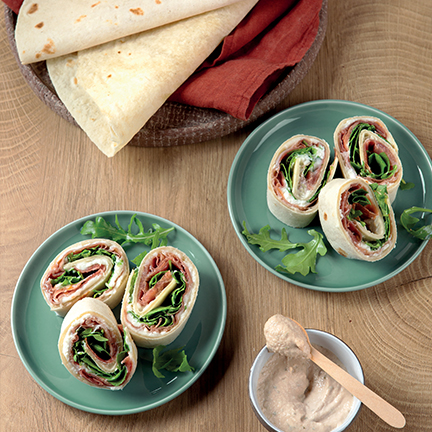

Piadina roll
This dish brings together the flavors of Parma ham, the creamy texture of Squacquerone cheese, and arugula, offering a delicious culinary italian experience. Ready in just 5 minutes, it's an ideal solution for coffee shops seeking to provide their customers with quick, yet authentically Italian, meal options.
The essence of italian cuisine: common ingredients in italian cooking
Italian cuisine is famous for its simplicity, elegance and flavors. This highlights the importance of certain basic ingredients that are essential in any Italian cuisine. Let's explore these key ingredients that are an important part of Italian recipes, which you will find in many of its dishes, creating the delicious touch of Italian cuisine. Without these ingredients, a dish is not Italian!
What foods are famous in italy?
Check out these 7 basic ingredients that you will find in every italian cuisine:
- Olive oil: It is used for cooking, dressing, and finishing dishes. Extra virgin olive oil, with its rich aroma and flavor, is particularly prized for its ability to elevate simple ingredients.
- Garlic: Italians use garlic judiciously to add aroma to dishes. It's a fundamental ingredient in sauces, meats, and vegetable preparations, infusing them with its unmistakable flavor.
- Tomatoes: Whether fresh, sun-dried, or as a sauce, tomatoes add a vibrant color and acidity to Italian dishes, making them indispensable in the kitchen.
- Fresh herbs: such as basil, rosemary, parsley and oregano give dishes vibrant flavors and aromas. For example, basil is essential in pesto, while rosemary and thyme add a delicious touch to roast and stews. Oregano seasons pizza and sauces with its notes.
- Cheese: Italy's cheese variety is huge, with Parmesan cheese, mozzarella, ricotta, and Pecorino Romano being among the most used. Each cheese adds a unique texture and flavor profile to differents dishes.
- Lemon: It brings a refreshing and zesty touch to a variety of dishes. Its zest elevates the flavor in pastas and risottos, while the juice balances perfectly the flavors of seafood dishes and salads. Lemon is also used in desserts as it brings a light, citrusy freshness.









